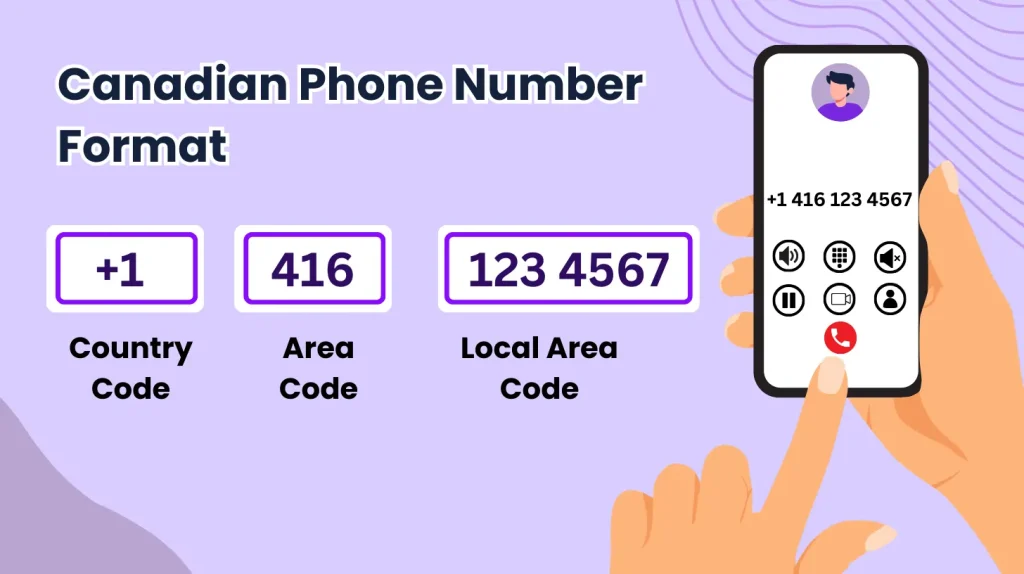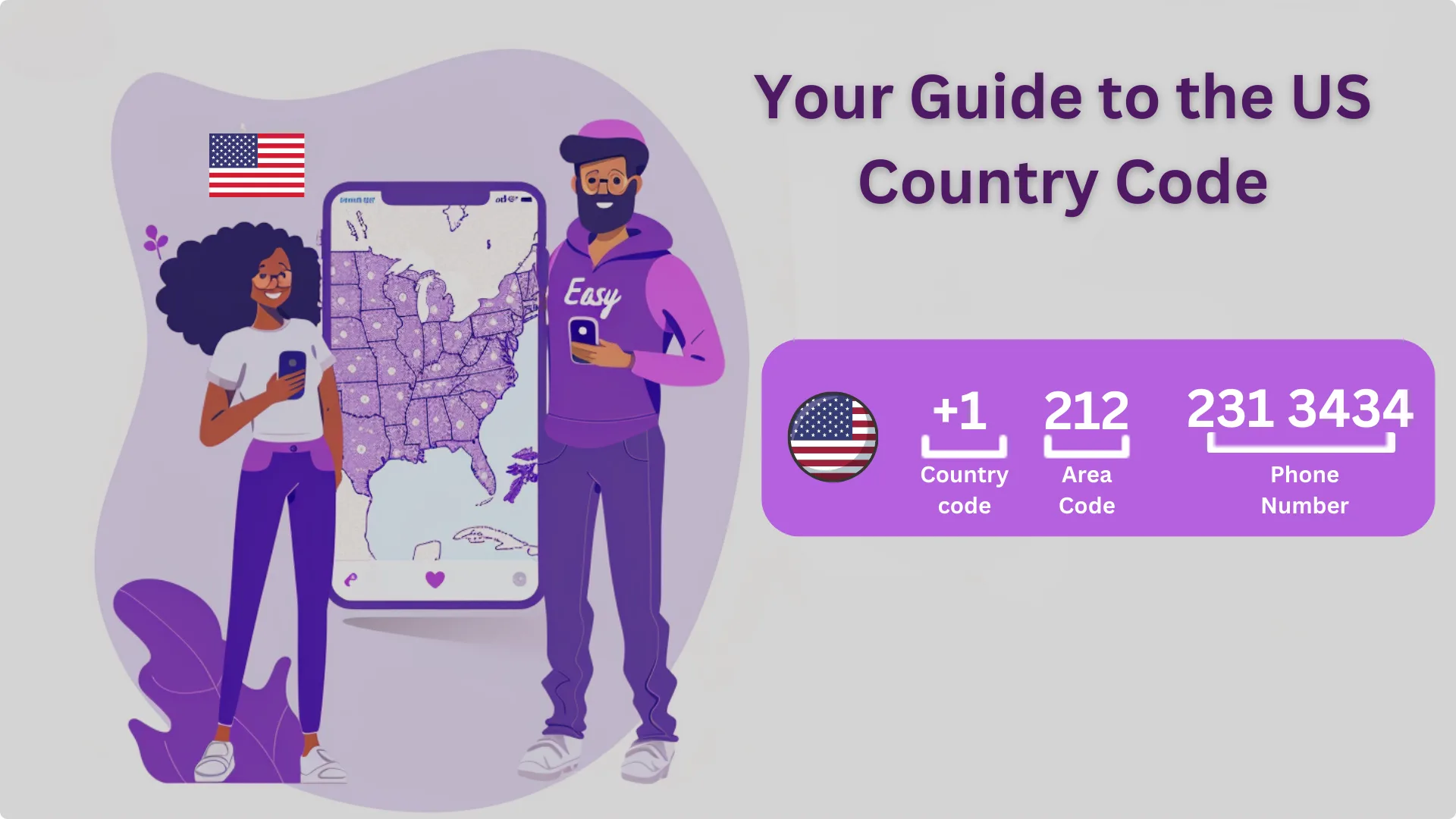Curious about how Canadian phone numbers are formatted? Well, you’re in the right place!
We explore the ins and outs of Canadian phone numbers, including the North American Numbering Plan (NANP), the country code for Canada, and the format for Canadian area codes.
We also discuss the different types of Canadian phone numbers, how to dial them correctly, and common mistakes to avoid.
So, grab a cup of coffee and let’s dive in!
Key Takeaways:
Canadian phone numbers follow the North American Numbering Plan (NANP) format, with a +1 country code, 3-digit area code, and 7-digit local number.
There are different types of Canadian phone numbers, including landline, mobile, toll-free, and VoIP numbers.
When dialing a Canadian phone number, always remember the country code and use the correct format to avoid common mistakes.
What Is the Canada Phone Number Format?
The Canada phone number format follows the North American Numbering Plan (NANP), which is also used in the United States. This format includes a country code, area code, and a local seven-digit number, making it easy to understand and use for both domestic and international communication.
What Is the North American Numbering Plan (NANP)?
The North American Numbering Plan (NANP) is a telephone numbering system used by countries such as Canada and the United States, coordinating the assignment of area codes and local numbers to ensure efficient and organized communication.
This standardized system plays a crucial role in simplifying the process of dialing numbers across borders, contributing to the seamless connectivity within North America. By allocating unique combinations of area codes and local numbers, the NANP prevents duplication and confusion, allowing telecommunications providers to manage their networks efficiently. For users, the NANP ensures reliable connections by providing a clear and structured framework for dialing both domestic and international calls, promoting a smooth and hassle-free communication experience.
How Is the Canadian Phone Number Format Different from Other Countries?
The Canadian phone number format, dictated by the North American Numbering Plan (NANP), differs from the formats used in countries like the United Kingdom, Australia, and Germany, especially in the structure of area codes and local numbers as well as the dialing procedures for international calls.

What Is the Country Code for Canada?
Canada’s country code is +1, which is also shared with the United States, making it necessary to prefix this code for international calls to Canada.
In today’s globalized world, the country code +1 plays a crucial role in connecting individuals and businesses across borders. Whether you are reaching out for a personal conversation or making an important business call, adding +1 before Canadian numbers ensures that the calls are directed accurately to the intended destination.
This standardization of country codes not only simplifies international dialing but also helps in seamlessly bridging communication barriers between countries. It showcases how technology and telecommunications have evolved to facilitate easy and efficient connections worldwide.
What Is the Format for Canadian Area Codes?
Canadian area codes are three-digit numbers that identify specific regions within the country, such as 416 for Toronto and 613 for Ottawa in Ontario.
Each area code has its own unique geographical significance, helping to locate the origin of a phone call within Canada. For example, area code 604 is associated with British Columbia, while 403 is linked to Alberta. The assignment of these codes is managed by the Canadian Numbering Administrator (CNA), which ensures efficient allocation and maintenance of phone numbers.
When new phone services are introduced or populations grow in certain regions, new area codes may be introduced to meet the increasing demand for telephone numbers. This process ensures that the phone number system remains well-organized and adaptable to changing telecommunications needs.
How Many Digits Are in a Canadian Phone Number?
A complete Canadian phone number includes ten digits, consisting of a three-digit area code and a seven-digit local number.
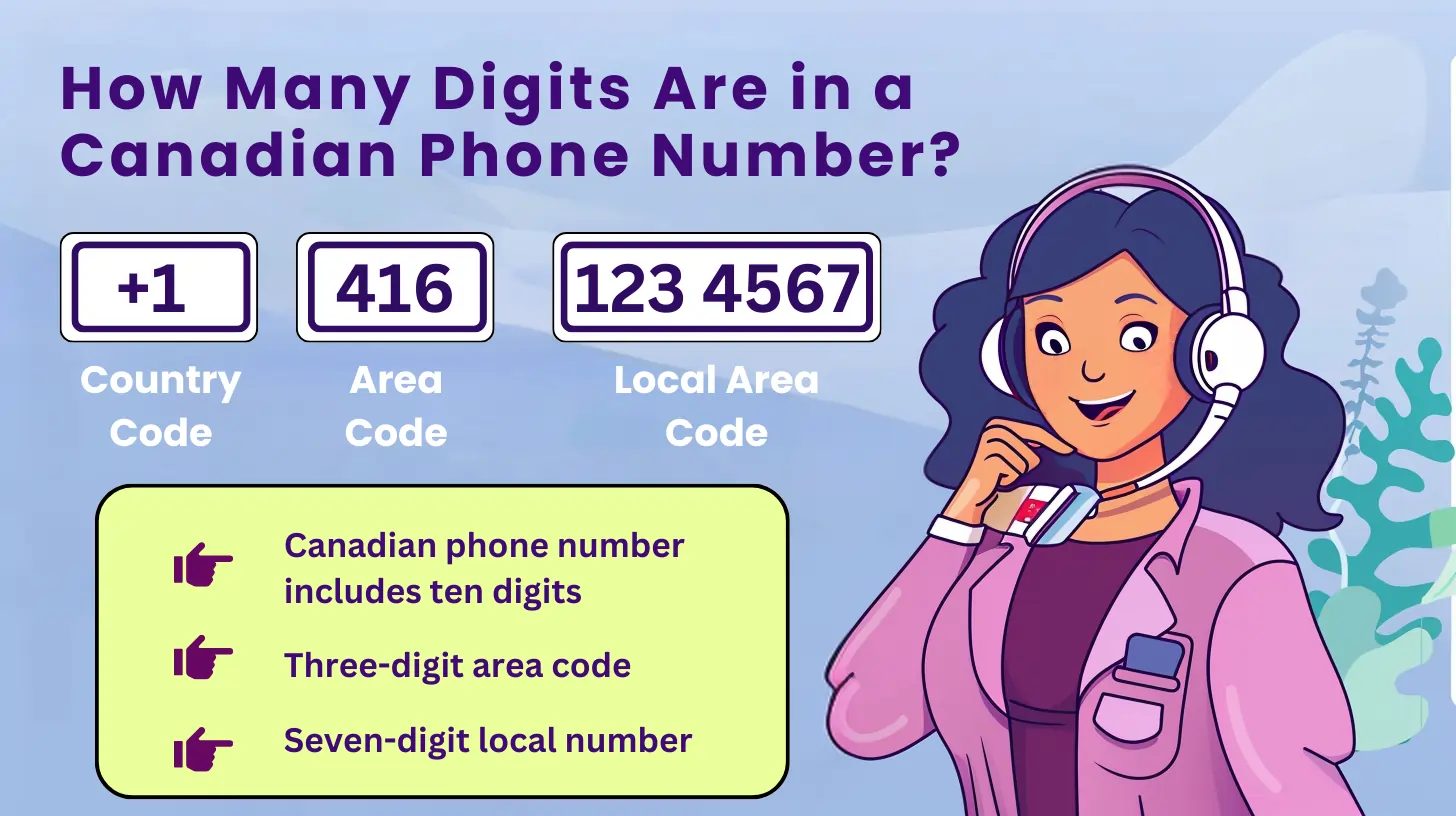
The area code in a Canadian phone number is vital as it indicates the geographic region or city the number is associated with. These three digits are the initial part of the phone number and help in routing calls to the correct location. On the other hand, the seven-digit local number is unique to each phone line within the specified area code. It is crucial for dialing a specific phone within the region. Together, these ten digits make up the complete phone number that enables communication across various regions in Canada.
What Are the Different Types of Canadian Phone Numbers?
Canadian phone numbers can be categorized into various types, including landline numbers, mobile numbers, toll-free numbers, and VoIP numbers, each serving different communication needs and purposes.
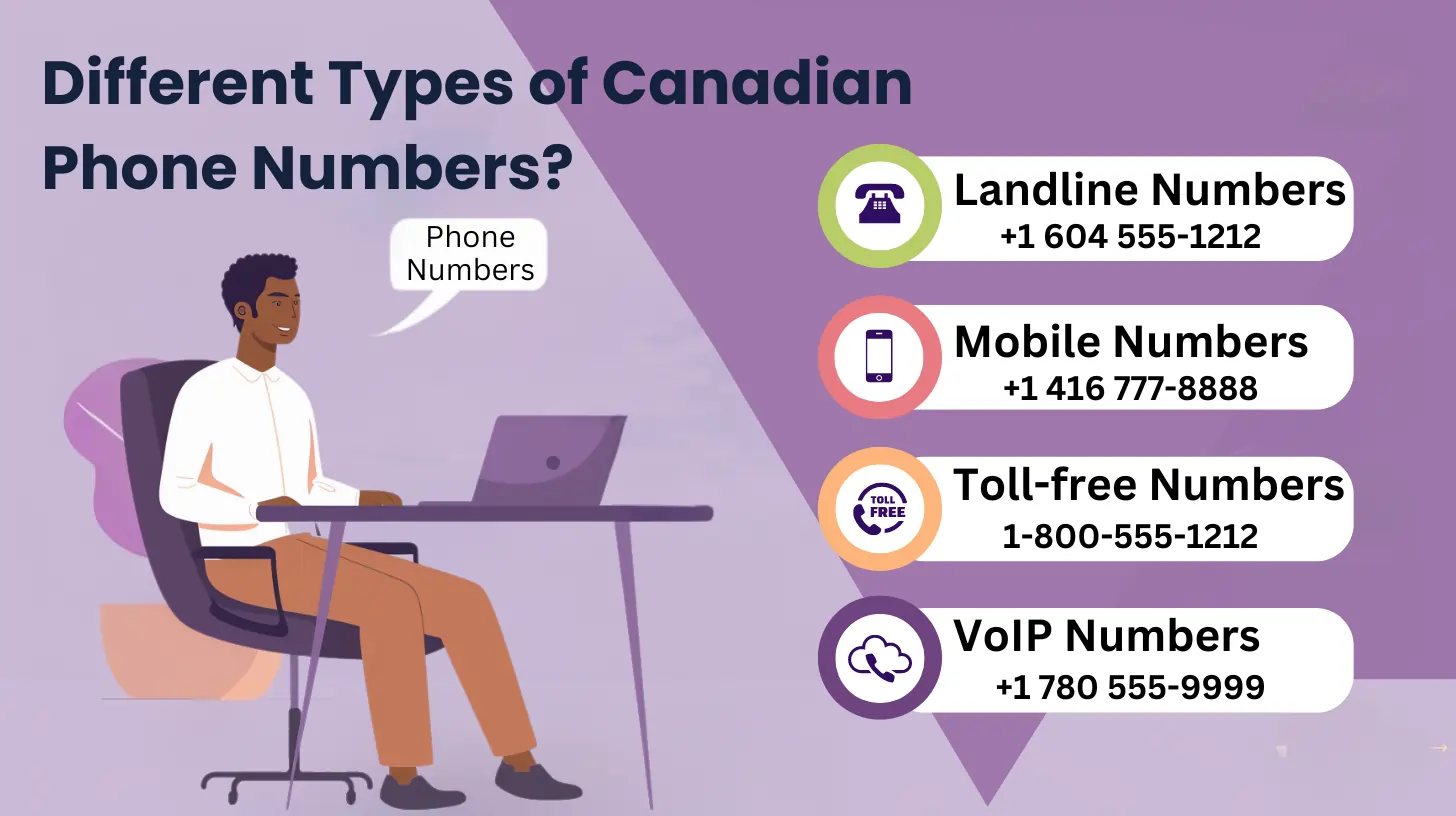
Landline Numbers
Landline numbers in Canada are traditional phone lines provided by telecommunications providers, commonly used for residential and business communications.
In Canada, landline numbers have been a staple in communication for decades, offering a reliable means of connection for households and businesses alike. Despite the rise of mobile phones and internet-based communication, many Canadians still prefer the stability and clarity of landline calls for important conversations.
Telecommunications providers in the country offer various services with landline numbers, including local and long-distance calling plans, voicemail services, and even bundled packages with internet and television subscriptions.
Mobile Numbers
Mobile numbers in Canada are used for cell phones and are essential for maintaining a local presence and facilitating mobile communication.
These numbers play a crucial role in personal and professional interactions, enabling individuals to stay connected with family, friends, colleagues, and clients.
Whether it’s coordinating plans, sharing updates, or conducting business transactions, mobile numbers serve as a primary means of contact in today’s fast-paced world. Telecommunications providers play a significant role in managing these numbers, allocating and assigning them to users across the country. They ensure the smooth functioning of mobile communication networks, enabling seamless connectivity and reliable service for users.
Toll-free Numbers
Toll-free numbers in Canada allow businesses to provide free calling options for their customers, enhancing customer service and accessibility.
Not only do toll-free numbers eliminate cost barriers for customers reaching out to businesses, but they also convey a sense of credibility and professionalism.
Toll-free numbers can be easily recognized by their distinct prefixes such as 1-800, 1-888, or 1-877, making them memorable for customers. This recognition fosters trust and encourages customers to engage with the business, leading to increased inquiries, sales, and overall customer satisfaction.
VoIP Numbers
VoIP numbers in Canada utilize internet protocols for making calls, offering cost-effective communication solutions but also needing careful management to avoid call failures.
One of the key advantages of using VoIP numbers is the significant cost savings they offer compared to traditional phone services. Businesses can enjoy lower long-distance charges and international call rates, making it an attractive option for companies with global operations.
Furthermore, VoIP numbers enable greater flexibility and scalability, allowing businesses to easily add or remove lines as needed without the constraints of physical phone lines. This adaptability is especially beneficial for growing businesses that require a dynamic communication system.
Managing VoIP numbers effectively requires attention to detail and proactive measures to ensure reliable communication. Factors such as network stability, bandwidth allocation, and security protocols must be carefully monitored to prevent call quality issues and service disruptions.
How to Dial a Canadian Phone Number?
Dialing a Canadian phone number requires understanding the specific calling procedures, including the dialing code for international calls and the format for domestic calls, ensuring seamless communication regardless of the caller’s location.
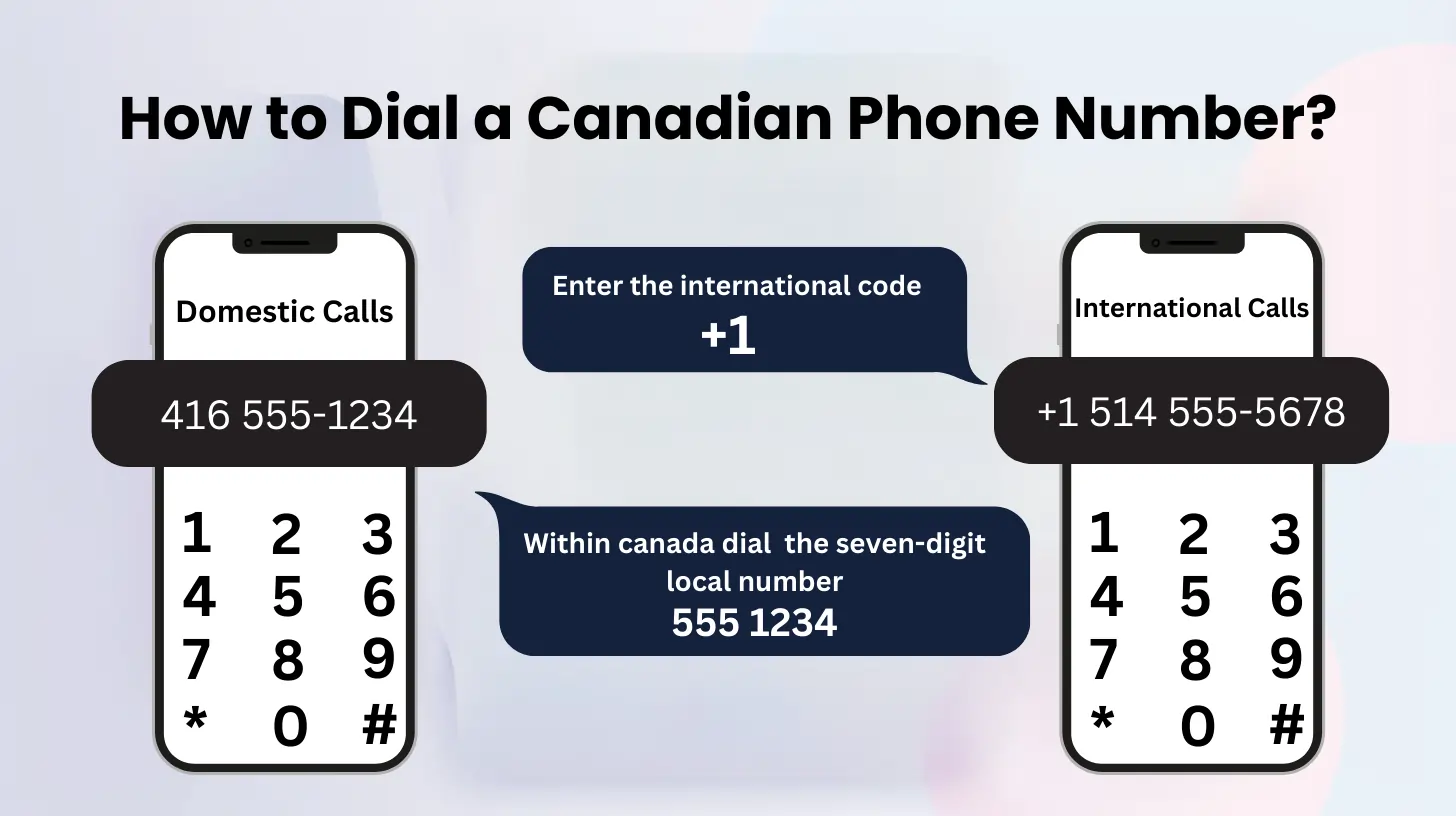
International Calls
To dial a Canadian phone number from abroad, you must first enter the international access code followed by Canada’s country code, +1, and then the area code and local number.
Using the correct international access code is crucial when making calls to Canada from overseas. The international access code varies depending on which country you are dialing from. For instance, in the United States, the international access code is 011.
After entering the international access code, you then dial Canada’s country code, which is +1. The + symbol signifies that it is an international call. Following the country code, you input the specific area code for the region in Canada you wish to reach, and finally, the local phone number you want to connect to.
Domestic Calls
For domestic calls within Canada, dial the three-digit area code followed by the seven-digit local number, ensuring that the area code correctly corresponds to the recipient’s location.
When making local calls within the same area code, you can simply dial the seven-digit local number. To avoid any confusion, it’s important to remember that the area code may be required even for nearby areas. If you are unsure of the recipient’s area code, you can always look it up online or consult a local directory. It’s always a good practice to double-check the numbers before dialing to ensure a successful connection.
What Are the Common Mistakes When Dialing a Canadian Phone Number?
Common mistakes when dialing a Canadian phone number include forgetting the country code, mixing up area codes, adding extra digits, and using the wrong format, all of which can lead to call failures and hinder effective communication.
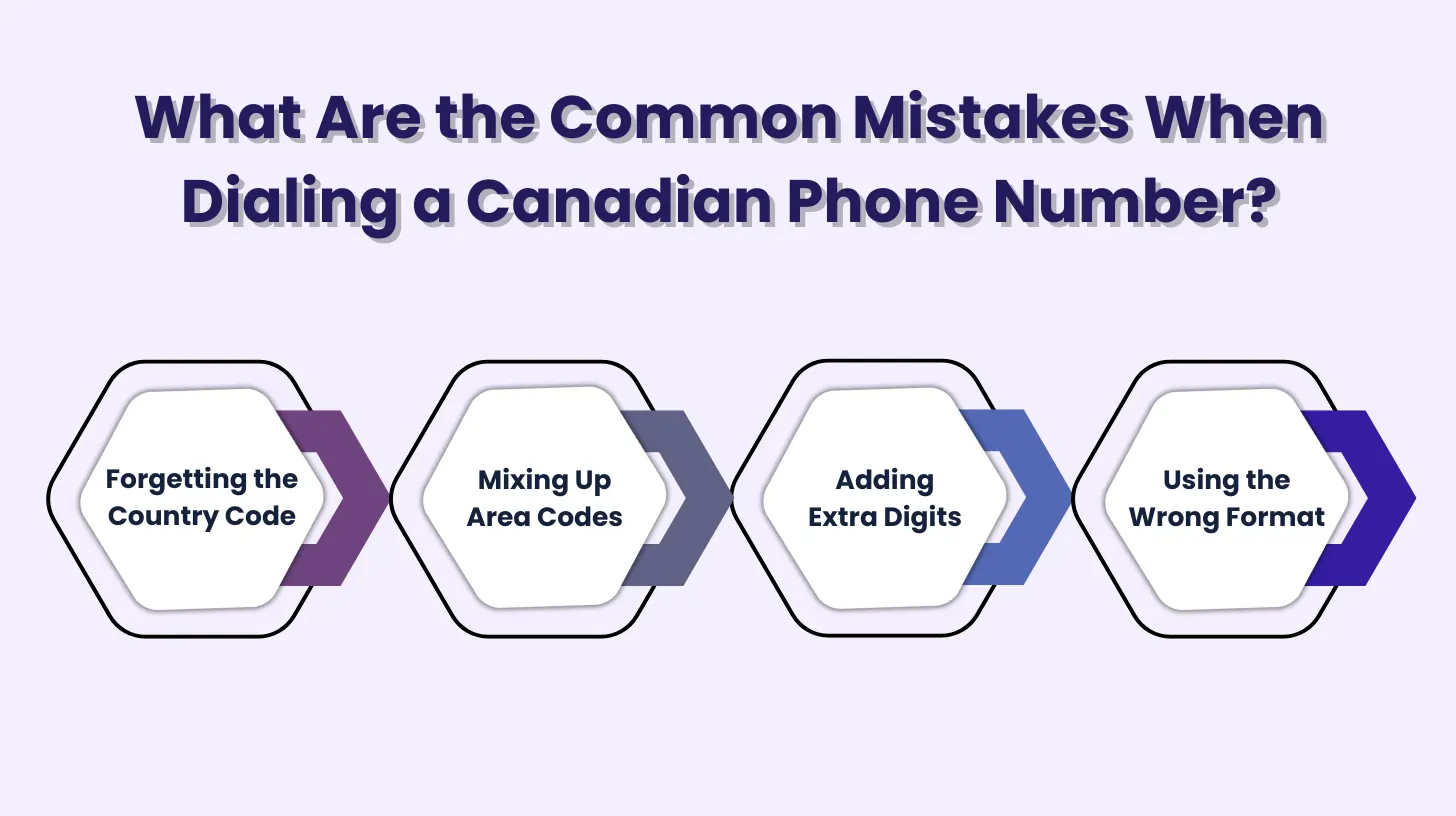
Forgetting the Country Code
One of the most common mistakes is forgetting to include Canada’s country code, +1, when making international calls, resulting in failed connections.
Remembering to dial the correct country code is crucial for establishing a successful international call. The country code serves as an essential identifier, allowing the call to be routed to the correct destination country.
To make it easier to remember, consider saving frequently dialed international numbers with the country code pre-programmed in your contacts list. Another useful tip is to associate each country code with a specific mnemonic device or memorable pattern to help recall them effortlessly when needed.
Mixing Up Area Codes
Mixing up area codes is a frequent error that can lead to dialing the wrong number or reaching a different region than intended, causing call failures.
When identifying an area code, always start with the three-digit prefix that precedes the seven-digit local number. Each region has its unique area code allocated by telecommunications authorities.
To avoid this mistake, double-check the area code before making a call, especially when dialing unfamiliar numbers. Saving contacts with their respective area codes in your phone can also prevent errors.
Utilize online area code lookup tools or consult a directory for accurate information. Taking these precautions can ensure seamless communication without disruptions.
Adding Extra Digits
Adding extra digits to a Canadian phone number disrupts the format and leads to call failures, as the system cannot recognize the incorrect number length.
Ensuring the correct digit count is crucial, as Canadian phone numbers follow a specific format: (XXX) XXX-XXXX. Common errors include adding a digit at the beginning beyond the area code or after the last four digits, resulting in an invalid number.
Another frequent mistake is omitting a digit, causing the number to be incomplete. These errors not only disrupt the dialing process but also create confusion for both the caller and the recipient. By accurately inputting the ten digits in the correct order, one can ensure seamless communication and avoid unnecessary complications.
Using the Wrong Format
Using the wrong format for a Canadian phone number, such as misplacing the area code or local number, results in unsuccessful call attempts and communication breakdowns.
When dialing a Canadian phone number, it is essential to adhere to the correct format to ensure successful connections. The standard format includes the country code (+1), followed by the area code, then the local number.
For example, a Toronto number would be dialed as +1 416 XXX XXXX. It is crucial to double-check the numbers before dialing to avoid any errors that might disrupt the call. By following these best practices, you can avoid communication hurdles and effectively connect with the intended recipient.
Conclusion
Understanding the Canadian phone number format is essential for seamless communication whether you’re within Canada or calling internationally. The North American Numbering Plan (NANP) governs Canadian phone numbers, ensuring a consistent structure of +1 country code, three-digit area code, and a seven-digit local number. This standardized format not only simplifies dialing procedures but also facilitates efficient telecommunication across borders.
Canadian phone numbers encompass various types including landline, mobile, toll-free, and VoIP numbers, each serving unique communication needs. Whether it’s for personal connections or business communications, knowing how to correctly dial Canadian numbers—whether domestic or international—ensures successful connections without common pitfalls like forgetting the country code or mixing up area codes.
As telecommunications evolve, the Canadian Numbering Administrator (CNA) manages the allocation of new area codes to accommodate growing demand, ensuring the integrity and functionality of the phone number system.
In conclusion, grasping the nuances of Canadian phone numbers empowers users to navigate the complexities of modern communication effectively, fostering connectivity and bridging distances effortlessly.
FAQ's
What is the format of a Canadian phone number?
Canadian phone numbers follow the North American Numbering Plan (NANP) format, which includes a country code, area code, and local number.
What is the country code for Canada in a phone number?
The country code for Canada is +1, which is used for international calls.
Are all Canadian area codes three digits?
Yes, all Canadian area codes are three digits and identify a specific region or city.
How do I know which area code a specific city or region has?
A simple internet search can help you find the area code for a specific city or region in Canada.
Can I dial a Canadian phone number without using the country code?
No, the country code must be included when dialing a Canadian phone number from outside of Canada.
Can a Canadian phone number have more than seven digits?
No, Canadian phone numbers have a total of 10 digits (including the country code and area code) and cannot have more than seven digits in the local number.
What are some helpful tips for saving Canadian phone numbers in my contacts list?
- Include the country code (+1) at the beginning of the number.
- Save the contact name and phone number together, especially for frequently dialed numbers.
- Consider using a label or category to identify Canadian phone numbers within your contacts list.
- Double-check the number for accuracy before saving it to avoid typos or incorrect information.
Are there any mobile apps that can help me identify Canadian area codes?
Yes, there are several mobile apps available that can help you identify Canadian area codes. These apps often include features like:
- Searchable databases of area codes by city or region
- Reverse phone number lookup to identify the origin of a Canadian number
- Integrated dialing functionality to directly connect with a Canadian number
What if I need to dial a Canadian emergency number?
The national emergency number for Canada is 911. This number connects you to emergency services such as police, fire departments, and ambulance services. You can dial 911 from any phone in Canada, regardless of the area code.
Are there any future changes planned for the Canadian phone number format?
The Canadian Numbering Administrator (CNA) is responsible for managing phone numbers in Canada. While there are no currently announced plans for major changes to the phone number format, the CNA continuously evaluates the system’s efficiency and may introduce adjustments in the future to accommodate technological advancements or address any unforeseen needs.

